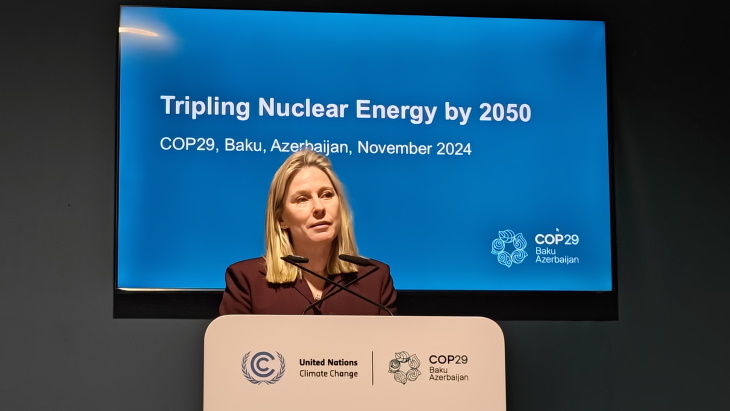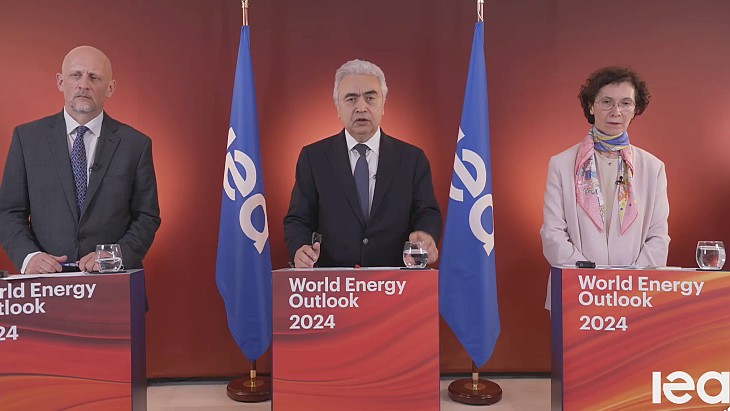Energy sector faces 'Grand Transition', says WEC
Technological innovation, government policies and lower growth expectations will have a significant impact on the global energy industry in the coming decade, according to the World Energy Council (WEC). It expects per capita energy demand to peak before 2030.
The organization today released its latest World Energy Scenarios - entitled The Grand Transition - at the 23rd World Energy Congress in Istanbul, Turkey.
WEC notes global energy demand has more than doubled since 1970. However, it suggests, "The future will be different." The report says underlying drivers - including lower population growth, new technologies, greater environmental challenges, and a shift in economic and geopolitical power - will re-shape the economics of energy.
The World Energy Scenarios comprise three scenarios for the energy sector up to 2060 referred to as Unfinished Symphony, Modern Jazz and Hard Rock. The scenarios were developed in collaboration with Accenture Strategy and the Paul Scherrer Institute.
Modern Jazz represents a "digitally disrupted", innovative and market-driven world, WEC said. Unfinished Symphony is a world in which more "'intelligent' and sustainable" economic growth models emerge as the world seeks a low-carbon future. Meanwhile, Hard Rock looks at the consequences of weaker and unsustainable economic growth with "inward-looking" policies.
Ged Davis, executive chair of scenarios at WEC, said: "It is clear that we are undergoing a Grand Transition, which will create a fundamentally new world for the energy industry. Historically, people have talked about Peak Oil, but now disruptive trends are leading energy experts to consider the implications of Peak Demand."
The report suggests that, as a result of "unprecedented efficiencies created by new technologies and more stringent energy policies", global primary energy growth will slow and per capita energy demand will peak before 2030. Maximum annual per capita energy use will reach 1.9 tonnes of oil equivalent.
Demand for electricity, it says, will double by 2060. "Meeting this demand with cleaner energy resources will require substantial infrastructure investments and systems integration to deliver benefits to all consumers," WEC suggests. Electricity generation investment to 2060 ranges from $35 trillion to $43 trillion, it forecasts.
The report also says, "Limiting global warming to no more than a 2°C increase will require an exceptional and enduring effort, far beyond already pledged commitments, and with very high carbon prices." WEC says global cooperation, sustainable economic growth, and technology innovation are needed to balance the energy trilemma: energy security, energy equity and environmental sustainability.
"The energy industry faces decades of transformation," according to WEC. "The challenge to the world's industry leaders is to maintain the current integrity of energy systems worldwide while steering towards this new transformed future. This requires new policies, strategies, and the consideration of novel and risky investments."
Under the Unfinished Symphony scenario, nuclear accounts for 17% of electricity generation, or 7617 TWh, and global installed capacity of 989 GWe in 2060. More than 50% of nuclear capacity additions throughout the period are in China, reaching 158 GWe in 2030 and 344 GWe in 2060. India follows China, with nuclear capacity reaching 137 GWe in 2060.
The World Nuclear Association has developed its own vision for the future of electricity, referred to as Harmony. This is based on the International Energy Agency's 2-degree scenario which aims to avoid the most damaging consequences of climate change and requires a large increase in nuclear energy. Harmony envisages a diverse mix of low-carbon generating technologies deployed in such a manner that the benefits of each are maximised while the negative impacts are minimised. The Association's target for nuclear energy is to provide 25% of electricity in 2050, requiring roughly 1000 GWe of new nuclear capacity to be constructed.
Researched and written
by World Nuclear News

_99697.jpg)








_50521.jpg)

